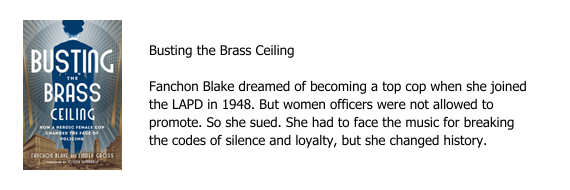Writing & Blog Coach Tips
Looking for help writing, editing, marketing or publishing your book?
You’ve come to the right place.
 I’m a bestselling writer and acclaimed writing and blog coach who draws on her editing and writing background, as well as her love for teaching, when working with others. I also am the founder of Incubation Press, which provides authors with simple self-publishing solutions.
I’m a bestselling writer and acclaimed writing and blog coach who draws on her editing and writing background, as well as her love for teaching, when working with others. I also am the founder of Incubation Press, which provides authors with simple self-publishing solutions.
On the writing front, I was the ghostwriter behind the national bestseller The Legacy of Luna, as well as for luminaries like Charles Schwab and his daughter Carrie Schwab-Pomerantz. I’ve written or collaborated on five other books. I’ve also worked as an editor for the Ladies’ Home Journal and The Los Angeles Times Magazine. But I missed teaching. So a decade ago, I became a writing coach.
As a writing coach, I work with people who love writing and those who dread it. My clients range from first-time writers to veterans—projects include memoirs, novels, and business or self-help books. Some of them are great with words but disasters when it comes to organizing their ideas. Others have tons to say if they could only bring themselves to sit down and write instead of sharpening their pencils down to stubs or revising their first page (or paragraph) until their erasers are mere nubs.
If you’re writing a book, then you already know how critical it is to convey your ideas the “write” way. That’s not all that easy, which you most likely have also figured out.
Over the years, I’ve come to realize that most of us struggle with many of the same issues when it comes to putting pen to paper or fingers to a keyboard. So I created a list of my top five writing tips. Whether you write for business or for pleasure, these five tips will help you write just about anything:
1) Start Out Sloppy
 Google the phrase sloppy letter and you will find a series of diatribes against the practice of careless correspondence. So it will probably surprise you to learn that I advise all my writing coach clients to write sloppy letters. Not to their clients, of course, or even to their friends or relatives. I urge them to write me. “The sloppier, the better,” I tell them.
Google the phrase sloppy letter and you will find a series of diatribes against the practice of careless correspondence. So it will probably surprise you to learn that I advise all my writing coach clients to write sloppy letters. Not to their clients, of course, or even to their friends or relatives. I urge them to write me. “The sloppier, the better,” I tell them.
Why? Simple. Most writers are so concerned about the quality of their work that the quality of their work suffers. Ideas and creativity don’t flow in the face of self-criticism. And how do you discover your own voice if you’re constantly judging its flaws? All that scrutiny spawns nothing but doubt and, eventually, immobilization. The Sloppy Letter to Linden diffuses those self-imposed constraints.
The rules are simple. You can’t worry about spelling, grammar, language, sentence structure, repetition, logic or anything else. You just write as fast and as long as you want, or until you’ve brought me up to speed about yourself and your project, including why it’s important to you and what you’re trying to say and/or accomplish, and any other background information that might be helpful.
Don’t worry about what you’re saying, how it sounds or whether you’ve said it before. Just get the words out. There will be plenty of time to prune, re-organize and edit later.
Some people finish this brain dump in less than an hour. Others work on it for months. Whether they wind up with whole chunks of prose that drop right into their manuscripts, find the voice they’ve spent months or years struggling to cultivate, or simply relax, without exception they find the exercise liberating. After all, how can you sweat something that’s supposed to be sloppy?
During the writing coach process, we return to the sloppy letter whenever someone gets stuck. “You know what I think you might want to try?” I ask if brainstorming hasn’t helped clients break through the impasse. With enthusiasm that reflects their obvious sense of relief, they answer, “Sloppy Letter to Linden!”
Try it the next time you need to jump start—or restart—your own writing.
2) Come Up with a Working Title
 Before you get too far along in a project, make sure you have a title for it. Worried that you haven’t come up with a grabber title for that article, book or chapter? If you’re still writing, relax. Titles often come when you least expect it. So give your conscious mind a break and let your subconscious take over. As long as you have a preliminary—or working—title that does its job, you’re golden.
Before you get too far along in a project, make sure you have a title for it. Worried that you haven’t come up with a grabber title for that article, book or chapter? If you’re still writing, relax. Titles often come when you least expect it. So give your conscious mind a break and let your subconscious take over. As long as you have a preliminary—or working—title that does its job, you’re golden.
Think of a working title as a steady plow horse as opposed to a flashy Arabian. Your working title is there to keep you on track, to remind you to stay on topic when you threaten to elope with a tangent.
Working titles don’t have to make your heart sing. They don’t have to be good or even mediocre. They just have to sum up the theme of the book, chapter, article, essay, or blog entry.
Can’t identify your theme? You’ve got bigger problems than the lack of a title. No worries. Figure out what you want the particular piece you’re writing to say, sum it up in your working title and you’ll be back on track.
3) Create an Outline
 All too often, the problem that stymies writers isn’t one of writing, but one of thinking. Whether you’re setting forth to write an article or a book, making the effort to outline the work once you have enough background information to work with will save time and aggravation.
All too often, the problem that stymies writers isn’t one of writing, but one of thinking. Whether you’re setting forth to write an article or a book, making the effort to outline the work once you have enough background information to work with will save time and aggravation.
So why do so many people try to write without an outline? In most cases, it just doesn’t make sense. Say you want to drive from San Francisco to Manhattan. You know that you have to head east, so you jump in your car and start driving. You may eventually reach your destination without consulting a map, but you’re sure going to waste a lot of time and gas with all the wrong turns along the way.
Writing is no different. And yet so many writers—whether experienced authors or novices—plunge in with only a vague idea of where they’re headed, and no plan for how to actually get there. When they eventually reach a dead end or get hopelessly lost somewhere around Nebraska, they finally realize they need a roadmap.
Whether you’ve written lots of pages or are just embarking on a project, two analogies can help explain the proper structure of an outline.
Picture a train. The locomotive (or introduction) pulls the various cars (independent ideas) which are linked together (with transitions). The caboose (the conclusion) wraps the whole thing up.
Thinking about a lawyer in court also helps. The lawyer—or writer—states the case (the introduction), makes the case (the body of the piece), and sums up the case (the conclusion).
So how you do get from a mess of ideas to the point where you have an outline, particularly if you don’t think in a very linear manner?
Start by jotting down all your ideas. You can even try using a mind map to spark new ideas and make interesting connections.
Group all the ideas that seem to be related into categories, then determine how those categories relate to one another.
Sort all the material that you’ve written—even the odd sentence that’s been scribbled on a scrap of paper—into groups, then determine which idea category each group falls into.
Create a new idea category for any group of material that doesn’t fit into the list, and relate it to the other categories.
Organize your idea categories into a list and write a topic sentence for each. You now have the leads for the chapters or sections of your work.
Remember that each category—or chapter—makes a single argument. And each chapter needs to be linked one to the other.
Find—and write—the transitions that link one category or chapter to another.
Write the topic sentences that set forth your case (i.e.: the introduction), and that sum it up (i.e.: your conclusion).
4) Opt for Power Prose
 Whether you’re writing a business letter, a memoir, a novel or serious non-fiction, you want your prose to pack a punch.
Whether you’re writing a business letter, a memoir, a novel or serious non-fiction, you want your prose to pack a punch.
Choose dynamic action verbs that make your text come alive instead of weak favorites like “to be” or “to have.”
Weak: They have many great deals.
Strong: Great deals abound.
Weak: The farmers were fearful that families would starve.
Strong: The farmers feared that their families would starve.
In addition to using power verbs, you also want to avoid passive sentences in favor of more vigorous sentence construction. As you’ll see, these two go hand in hand:
Passive: This charming house will save you money.
Active: Save money and buy this charming house now.
Passive: My family’s history is long, extending back to 18th century Scotland.
Active: My family’s long history extends back to 18th century Scotland.
Passive: It wasn’t a big surprise to me.
Active: I wasn’t surprised.
Avoid qualifiers. State your position as fact. Qualifiers (such as I think, I feel, I believe, it seems to me) just weaken your argument.
Qualified: We feel that this is the time to buy.
Strong: This is the time to buy.
Qualified: I believe that my family’s story typifies the immigrant experience.
Strong: My family’s story typifies the immigrant experience.
Cut the fat. Tightening your writing by eliminating repetitions or all those little filler words that don’t enhance meaning adds power to your text.
Wordy: She was thinking about all this as she wandered along the mountain trails when she stumbled on the hut.
Powerful: Lost in thought, she stumbled on the mountain hut.
5) Go Big on Detail & Texture
 You want to use lots and lots of detail and texture when writing a story—whether short or long, fiction or non-fiction.
You want to use lots and lots of detail and texture when writing a story—whether short or long, fiction or non-fiction.
One of the premiere writing rules can be summed up in three words: SHOW DON’T TELL. Though writing is often called “storytelling,” it should actually be renamed “story-showing.” And that’s done through dramatization, so that the reader has a sense that he or she is living the experience instead of just reading about it.
As Oakley Hall says, “What is not rendered, dramatized, is merely reported. Thus it is secondhand. It does not happen before the reader. He is only told about it after the fact. What is not shown is merely told. What is rendered will sprint to life off the page and capture the reader’s emotions. What is merely stated, reported, told, is inert, dead matter.”
Telling the reader that something is exciting, or that you are lonely evokes nothing—no image, no reaction. To respond, the reader needs to live the experience vicariously. Describing excitement, or beauty, or even an emotional state in a way that the reader can visualize and/or relate to allows him or her to participate and become part of the story instead of simply being a spectator.
In short, you want your reader to feel like a bug on the wall witnessing the experience you’re chronicling, so write in terms of all five senses: sight, sound, feel, smell, taste. Assume that your bug has the ability to read thoughts and pinpoint feelings, and include those as well.
A Final Note
 While it helps to consider these rules when working on your initial draft, they’ll mostly come into play during the editing phase. So put your inner editor on hold until then. Otherwise whether you’re putting together notes or an actual draft you run the risk of criticism-induced writing paralysis (also known as writer’s block). You’ll have plenty of time to drag out your inner editor once you’ve complete a draft. Until then, just write!
While it helps to consider these rules when working on your initial draft, they’ll mostly come into play during the editing phase. So put your inner editor on hold until then. Otherwise whether you’re putting together notes or an actual draft you run the risk of criticism-induced writing paralysis (also known as writer’s block). You’ll have plenty of time to drag out your inner editor once you’ve complete a draft. Until then, just write!
Oh yeah. And don’t forget to sign up for my free and fabulous insights on how to deal with—or better yet avoid—writer’s block.
































